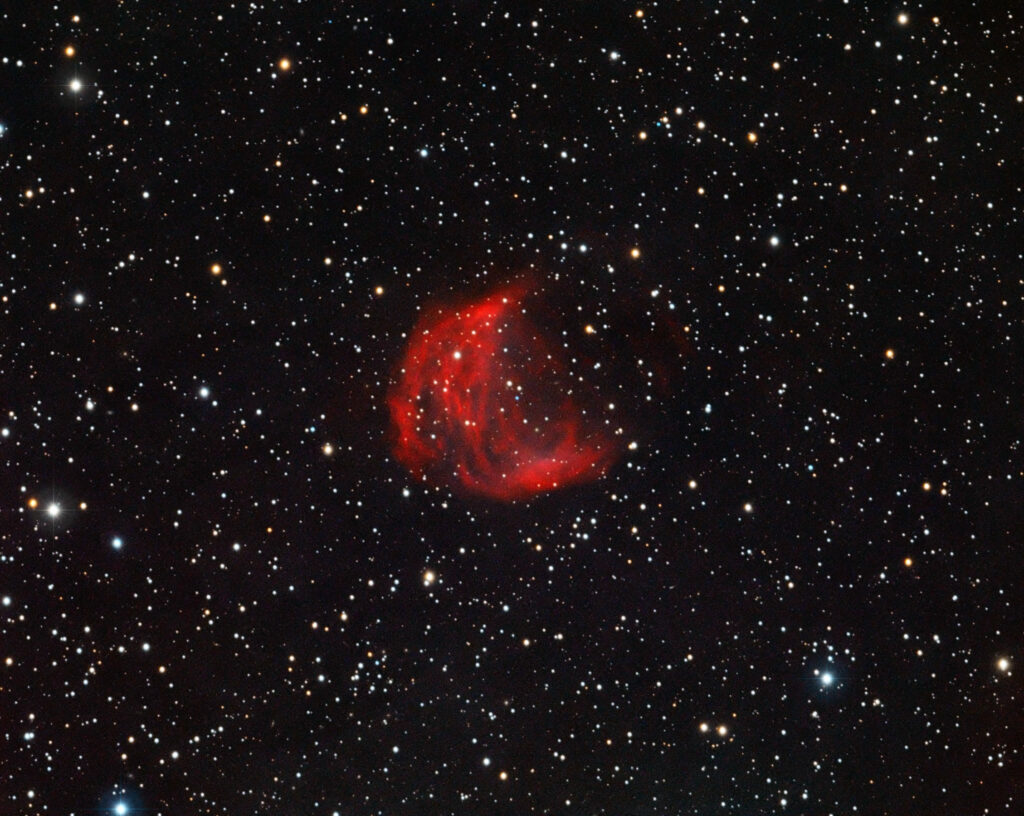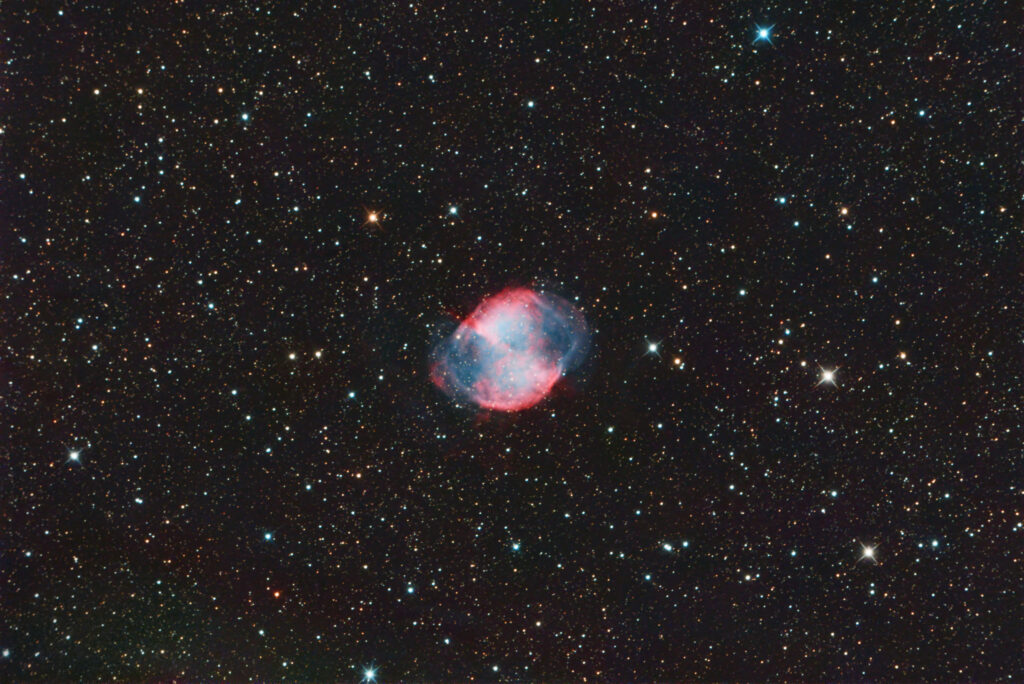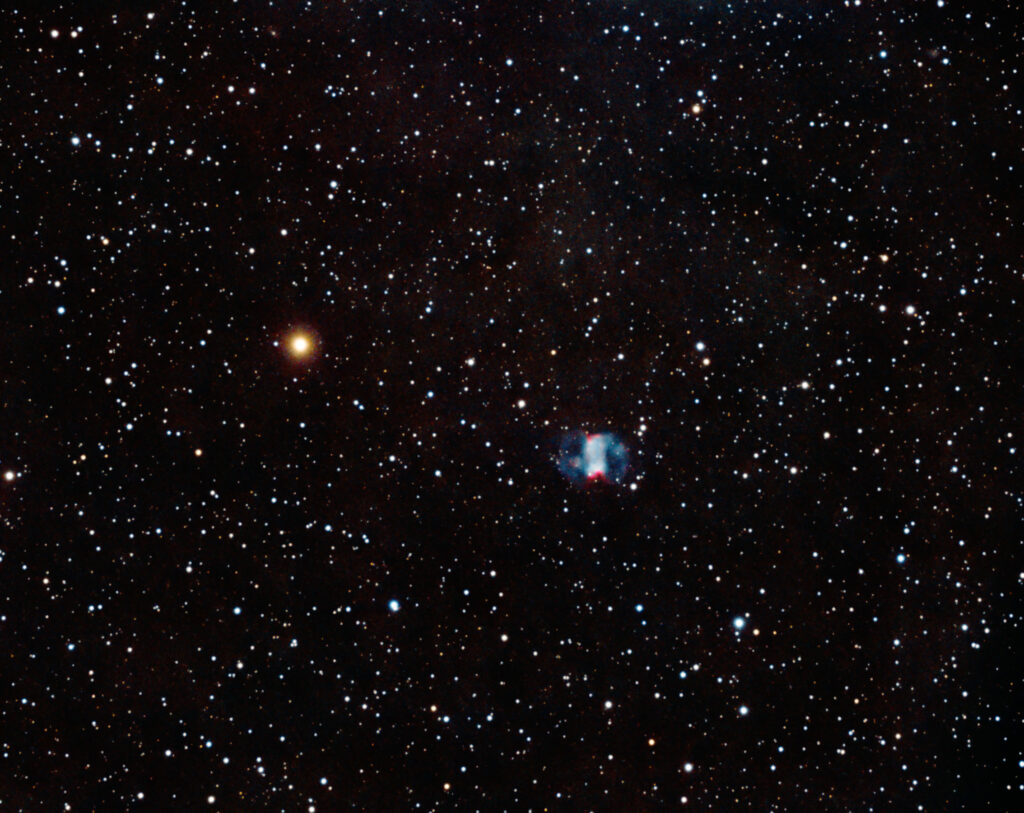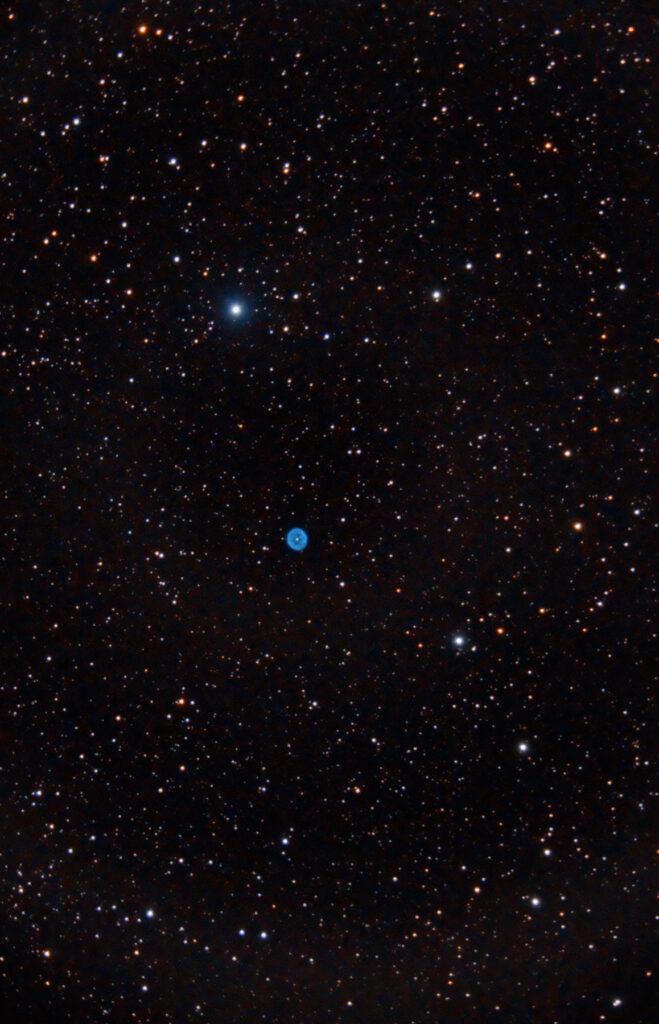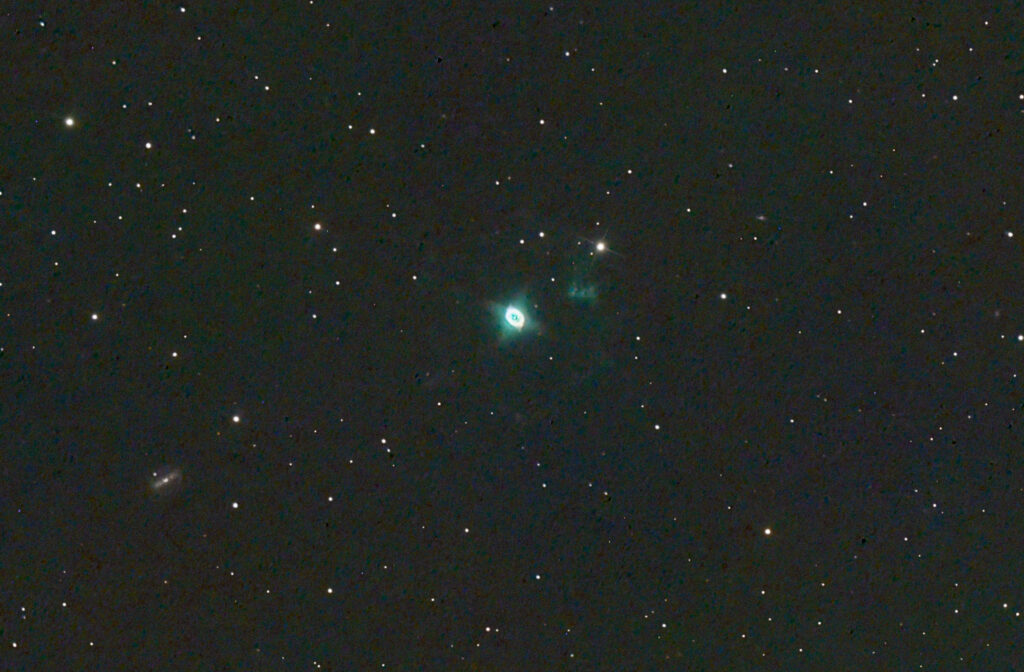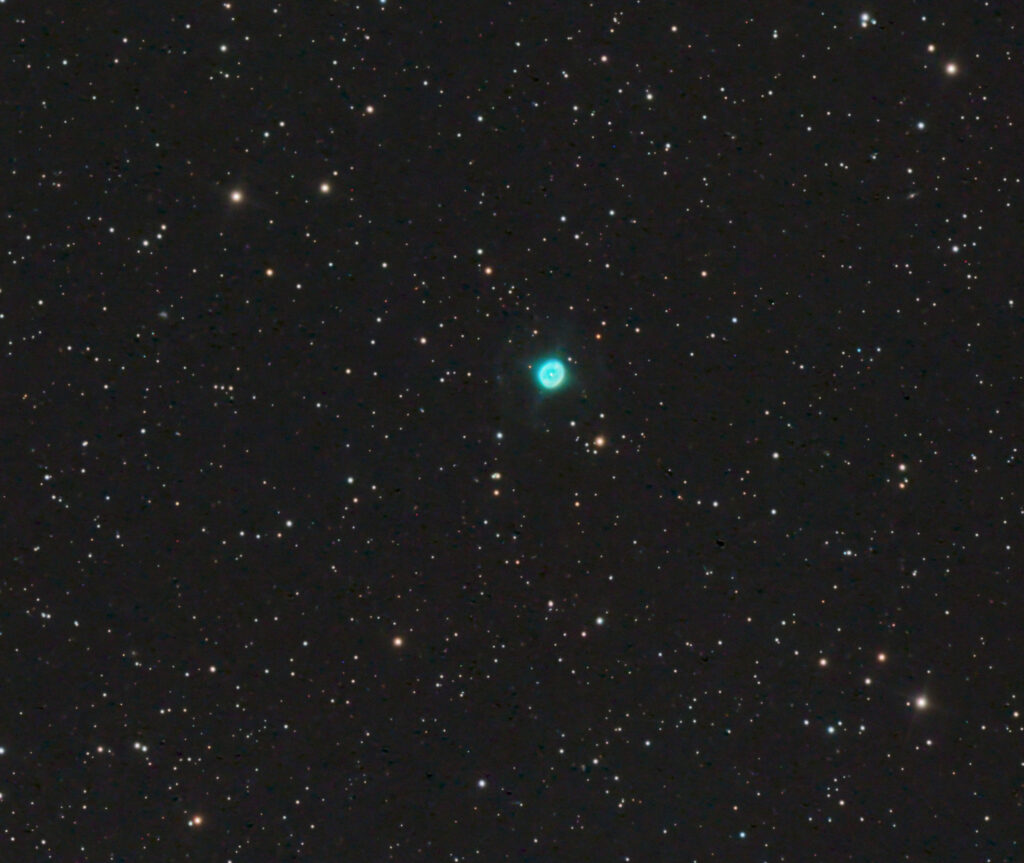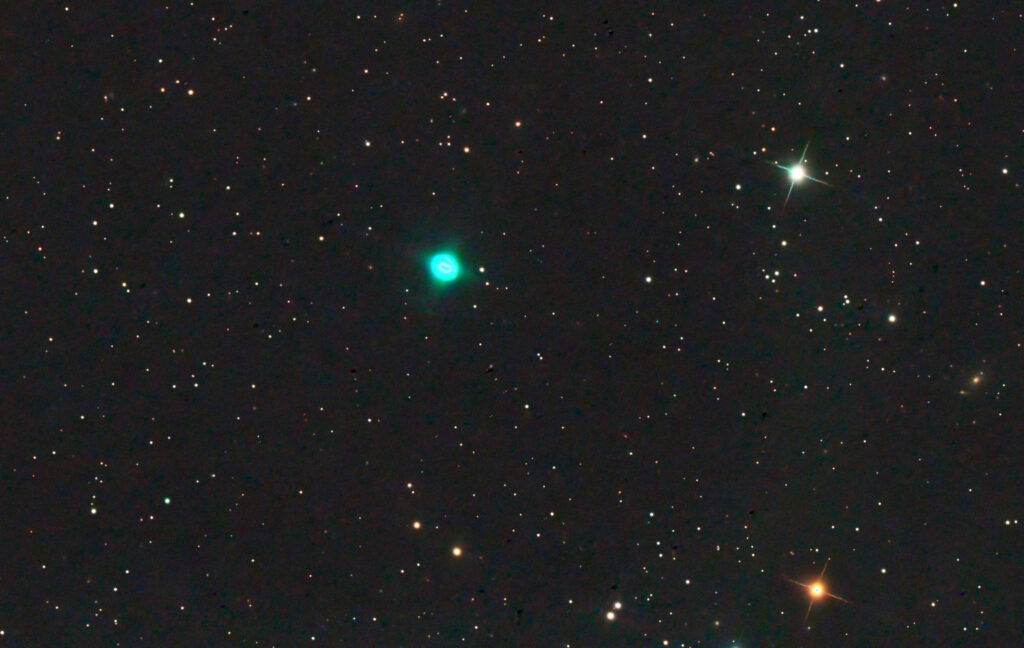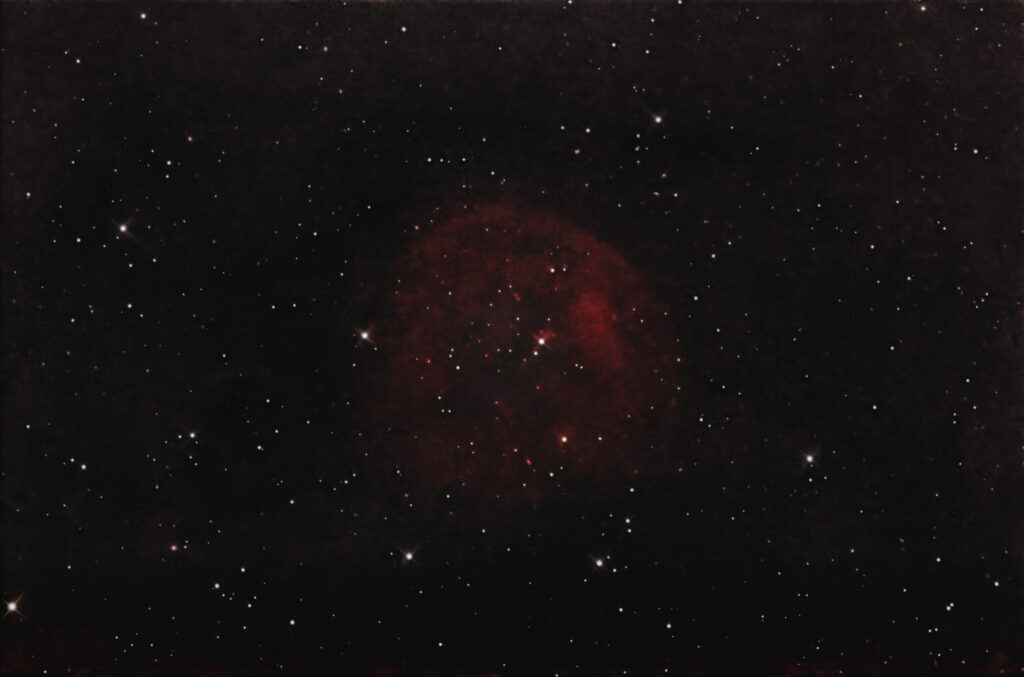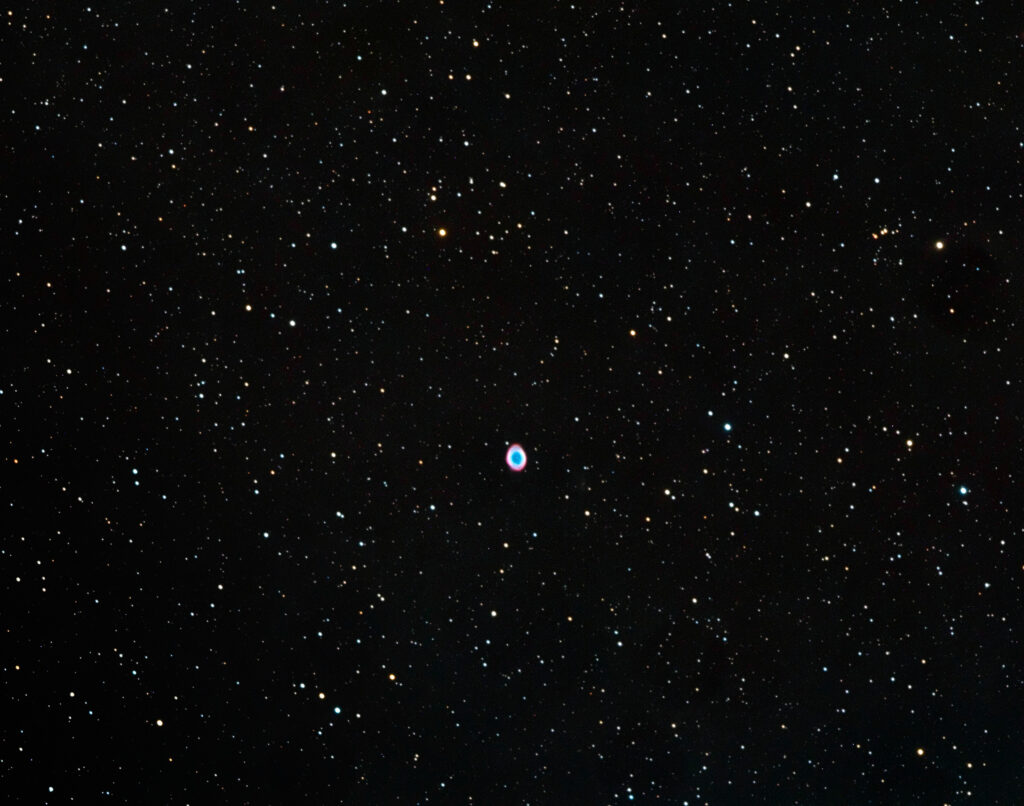
A planetary nebula is a type of emission nebula consisting of an expanding, glowing shell of ionized gas ejected from red giant stars late in their lives.
The term “planetary nebula” is a misnomer because they are unrelated to planets. The term originates from the planet-like round shape of these nebulae observed by astronomers through early telescopes.
All planetary nebulae form at the end of the life of a star of intermediate mass, about 1-8 solar masses. It is expected that the Sun will form a planetary nebula at the end of its life cycle. They are relatively short-lived phenomena, lasting perhaps a few tens of millennia, compared to considerably longer phases of stellar evolution. Once all of the red giant’s atmosphere has been dissipated, energetic ultraviolet radiation from the exposed hot luminous core, called a planetary nebula nucleus, ionizes the ejected material. Absorbed ultraviolet light then energizes the shell of nebulous gas around the central star, causing it to appear as a brightly coloured planetary nebula.
Click on the pictures below for more information and additional photos.
